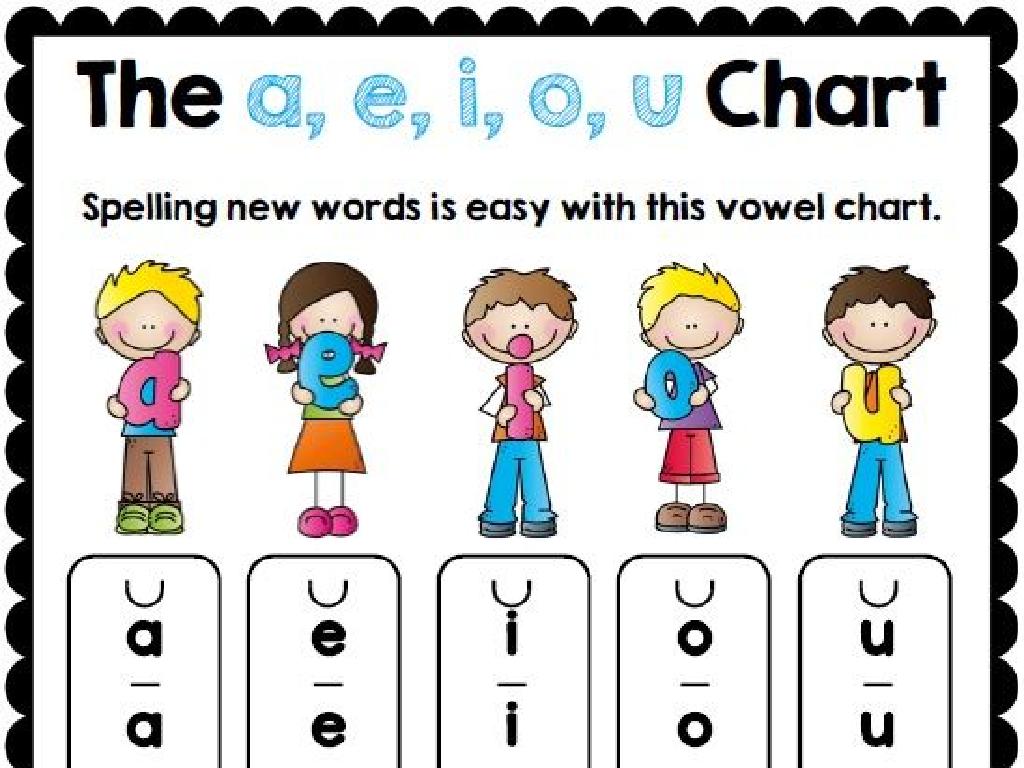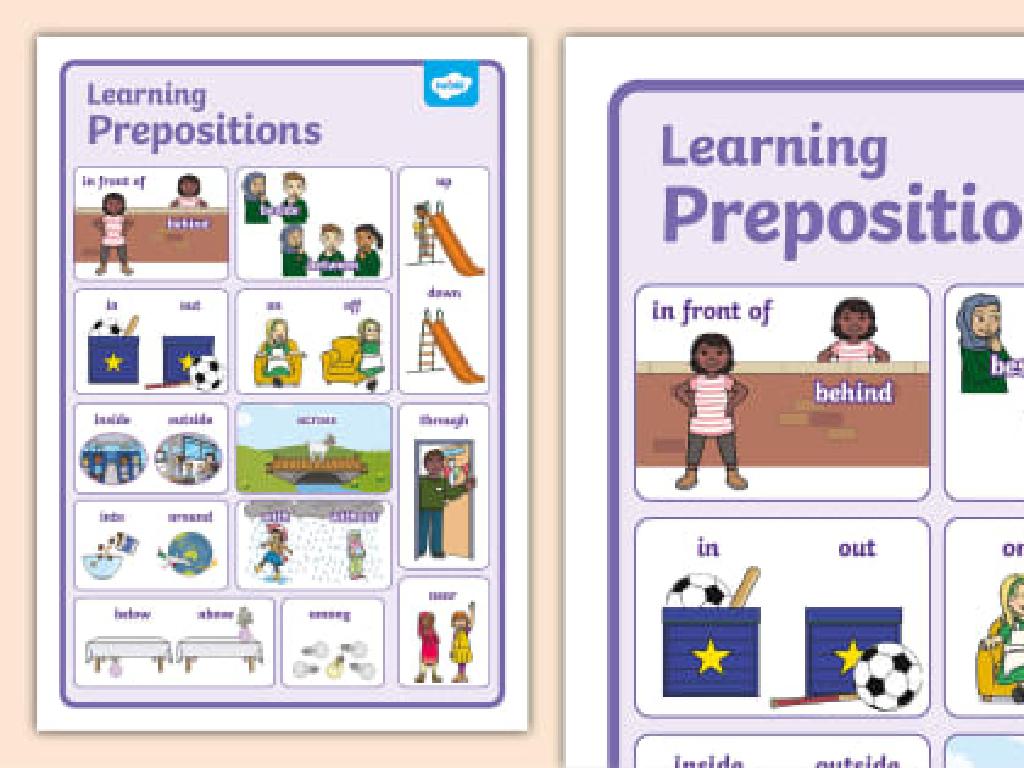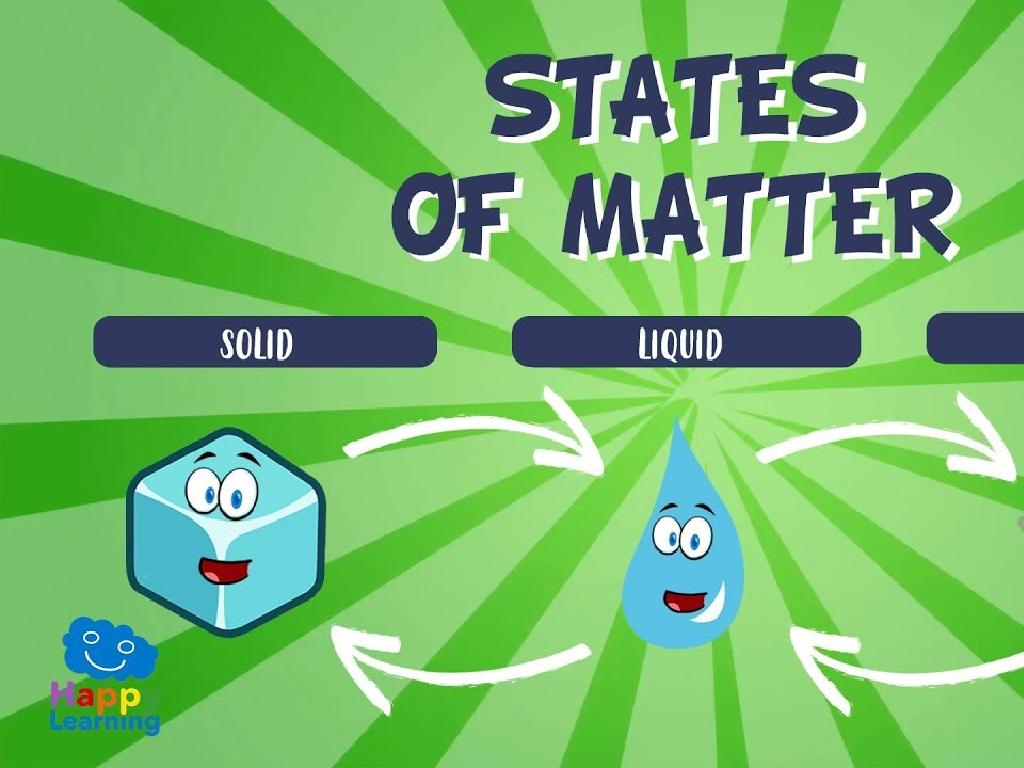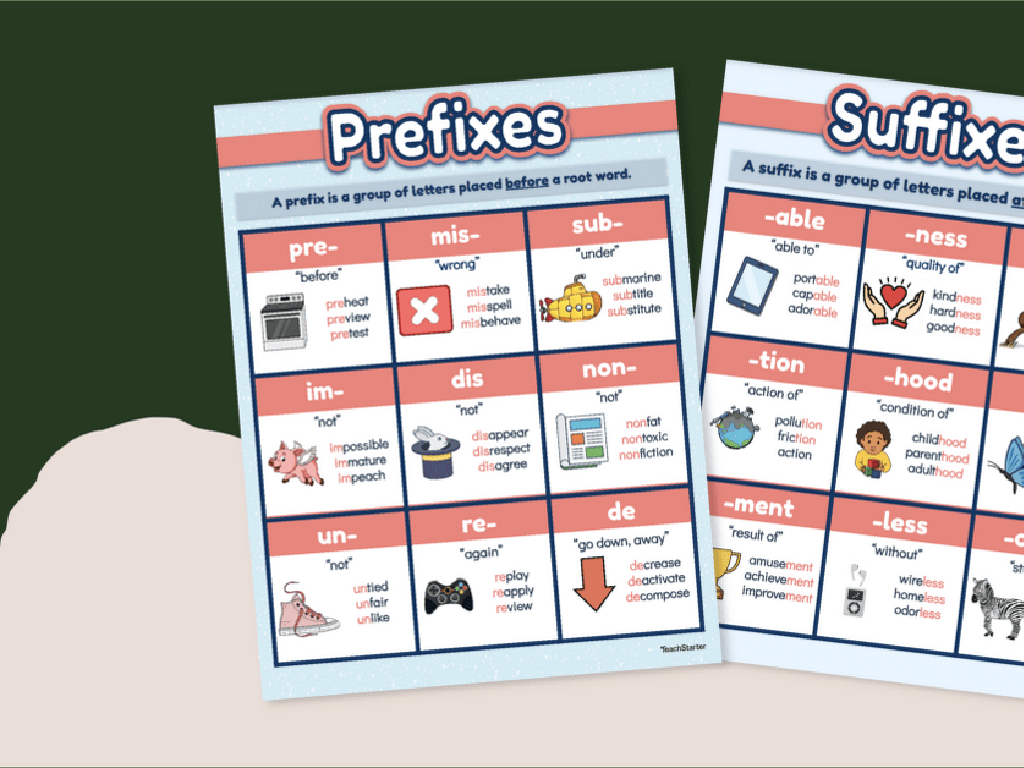Compare And Convert Metric Units
Subject: Math
Grade: Seventh grade
Topic: Units Of Measurement
Please LOG IN to download the presentation. Access is available to registered users only.
View More Content
Welcome to Metric Measurements!
– Grasp units of measurement
– Significance of metric units
– Metric units are used worldwide, making them essential for global communication and trade.
– Comparing metric units
– Learn to identify which of two metric units is larger and by how much.
– Converting metric units
– Master the skill of changing one metric unit to another using multiplication or division.
|
This slide introduces the concept of metric measurements, which are the most widely used system of measurement in the world. Understanding and using metric units are crucial skills in science, industry, and international trade. Today’s lesson will focus on comparing different metric units to understand their relative sizes and learning the process of converting between them, such as changing meters to kilometers or grams to milligrams. This foundational knowledge is essential for students to solve real-world problems involving measurements. Encourage students to think about where they encounter metric measurements in their daily lives and why it’s important to understand them.
Understanding the Metric System
– Origin of the Metric System
– Developed in France, 1790s for universal standardization
– Metric vs. U.S. Customary Units
– Metric: decimal system, U.S.: inches, feet, pounds
– Base Units: Meter, Liter, Gram
– Fundamental units for length, volume, and mass
– Converting within Metric System
– Use powers of 10 for easy conversion between units
|
This slide introduces the metric system, which is used worldwide for scientific and most international measures. It originated during the French Revolution to create a unified and standardized system for measurements. Comparing it to the U.S. customary units, the metric system is based on the decimal system, which makes it easier to convert between units, such as kilometers to meters or grams to kilograms, simply by moving the decimal point. Emphasize the base units of meter, liter, and gram as the foundation for length, volume, and mass, respectively. Provide examples of converting units within the metric system, such as 1000 grams equals 1 kilogram, to illustrate the simplicity of the system. Encourage students to practice conversions as a class activity.
Metric Units of Length
– Understanding km, m, cm, mm
– Kilometers for distance, meters for height, centimeters for small objects, millimeters for tiny items
– Comparing metric units
– Use reference objects to visualize: 1 km is a 10-min walk, 1 m is a guitar, 1 cm is a staple, 1 mm is a grain of sugar
– Real-life metric examples
– Measure your desk in cm, your pencil in mm, and the school track in km
– Conversion techniques
|
This slide introduces students to the basic metric units of length and how to compare them. Emphasize that the metric system is based on multiples of 10, making conversion straightforward. Provide relatable examples to help students visualize each unit’s scale. For instance, a kilometer could be a short drive, a meter the length of a door, a centimeter the width of a fingernail, and a millimeter the thickness of a dime. Encourage students to measure items around them to grasp the concept better. Teach them conversion techniques such as moving the decimal point to convert between units (e.g., 1 meter = 100 centimeters = 1000 millimeters).
Metric Units of Volume
– Understanding Liters and Milliliters
– 1 Liter (L) is 1000 Milliliters (mL)
– Comparing volumes in containers
– Which is more: 1.5L or 1500mL?
– Daily life volume examples
– Medicine dosage in mL, water bottles in L
– Conversion between units
– Use multiplication or division to convert
|
This slide aims to familiarize students with the metric units of volume, specifically liters and milliliters, and how to compare and convert between them. Start by explaining that a liter is a base unit of volume in the metric system, and a milliliter is a smaller unit, with 1000 milliliters making up 1 liter. Use visual aids to compare volumes in different containers, such as a water bottle and a medicine dropper, to give a practical understanding of these measurements. Provide everyday examples, like the volume of a soda bottle or the amount of liquid in a cooking recipe, to illustrate the concept. Teach students the conversion process, emphasizing that to convert liters to milliliters, you multiply by 1000, and to convert milliliters to liters, you divide by 1000. Encourage students to practice with real-life examples and prepare a few conversion exercises for them to solve.
Metric Units of Mass
– Kilogram, Gram, Milligram
– Common units for measuring mass: 1 kg = 1,000 g, 1 g = 1,000 mg
– Relate mass to everyday objects
– A paperclip weighs about 1 gram, while a textbook might be close to 1 kilogram
– Estimate mass of classroom items
– Guess the mass of items like pencils, books, and use a scale to check
– Conversion between units
|
This slide introduces students to the metric units of mass and helps them understand the concept of mass by relating it to objects they interact with daily. Start by explaining the three main units of mass in the metric system and their conversions. Use relatable examples to help students grasp the size of each unit. For the class activity, have students estimate the mass of various classroom items before actually weighing them to compare their estimates with the actual mass. This will give them practical experience with estimation and measurement. Additionally, demonstrate how to convert between kilograms, grams, and milligrams to build their skills in unit conversion.
Converting Metric Units
– Understanding the Power of 10
– Metric system is based on multiples of 10, making conversions straightforward.
– Metric Conversion Ladder Method
– Visual tool to help remember unit order and convert between them.
– Class Activity: Unit Conversion
– We’ll convert units as a class using real-life examples.
– Practice Makes Perfect
|
This slide introduces the concept of converting metric units by leveraging the simplicity of the base-10 system. Emphasize the ease of moving the decimal point to convert between units like meters, liters, and grams. Introduce the metric conversion ladder as a mnemonic to help students remember the order of units from kilo to milli. Engage the class with a hands-on activity where students work through examples together, converting units of length, volume, and mass. Provide additional practice problems for homework to reinforce the lesson. Encourage students to ask questions and discuss any difficulties they encounter during the activity.
Metric Conversion Mastery
– Guided conversion walkthrough
– We’ll solve problems together step-by-step.
– Tips for precise conversions
– Remember to use the conversion chart and unit prefixes.
– Group activity setup
– Form groups and distribute different conversion problems.
– Engage in problem-solving
– Collaborate to find solutions and explain your methods.
|
This slide is aimed at reinforcing the students’ understanding of metric unit conversions through practice and collaboration. Begin with a guided practice where you solve a few conversion problems as a class, demonstrating each step clearly. Share tips for ensuring accuracy, such as double-checking units and using conversion charts effectively. For the group activity, provide each group with a set of conversion problems that vary in difficulty. Encourage students to work together, discuss their strategies, and explain their reasoning. This will not only help them understand the concept better but also develop their teamwork and communication skills. As a teacher, circulate the room to offer assistance and challenge students with additional problems if they finish early.
Real-World Applications of Metric Conversions
– Importance of metric conversion
Metric units are used globally in science, industry, and everyday life.
– Everyday scenarios using conversions
Cooking recipes, medicine doses, and international travel involve unit conversions.
– Class discussion on metric experiences
Students share times they’ve encountered metric units, like in weather reports.
– Understanding conversion relevance
|
This slide aims to highlight the significance of understanding metric conversions in practical, real-world situations. Emphasize that metric units are the standard in most countries and are critical in fields such as science and engineering. Provide examples such as adjusting recipes, calculating medication dosages, or converting distances during travel. Facilitate a class discussion where students can share their own experiences with metric units, such as reading a weather report or measuring ingredients for a recipe. This will help them see the relevance of metric conversions in their daily lives and appreciate the importance of mastering this skill in math.
Class Activity: Metric Conversion Relay Race
– Form teams for relay race
– Understand relay race rules
– Each team member solves a part of the conversion problem before passing it on.
– Solve metric conversion problems
– Use knowledge from today’s lesson to convert between units like meters to kilometers.
– Reflect on conversion concepts
– Discuss as a class what strategies worked best and what was learned.
|
This activity is designed to reinforce the day’s lesson on metric conversions in a fun and interactive way. Divide the class into small teams, and set up a relay race where each student is responsible for converting a part of a larger problem. This could involve converting units of length, mass, or volume within the metric system. After the activity, lead a discussion to reflect on the strategies used, the importance of accuracy in conversions, and how this skill applies to real-world scenarios. Possible variations of the activity could include a scavenger hunt for conversion problems around the classroom or a ‘conversion bee’ where students compete to solve problems the fastest.
Wrapping Up: Metric Units
– Recap: Metric Units Importance
– Understanding metric units is essential for science and daily life.
– Homework: Conversion Worksheet
– Complete the worksheet to practice converting between metric units.
– Stay Curious and Practice
– Keep exploring how we use these measurements every day.
– Next Class: Quick Quiz Reminder
– Review today’s material; a quiz will kick off our next class.
|
As we conclude today’s lesson on metric units, remind students of the importance of these measurements in various aspects of life, including science, cooking, and even travel. Assign the metric conversion worksheet for homework to reinforce today’s learning. Encourage students to stay curious about how metric units appear in their daily lives and to practice conversions to build confidence. Finally, give them a heads-up about the quick quiz at the beginning of the next class to ensure they review the material covered today. This will help solidify their understanding and prepare them for more complex problems.






